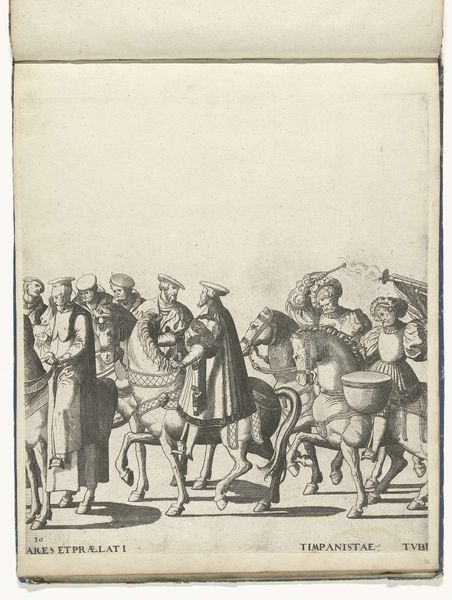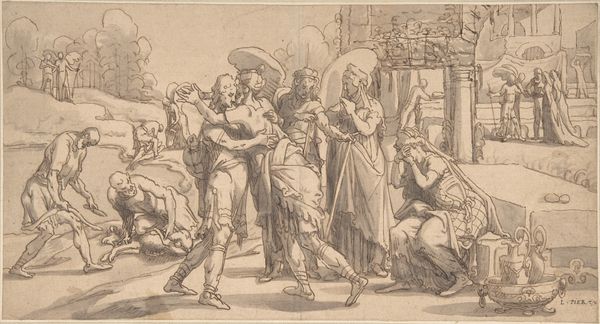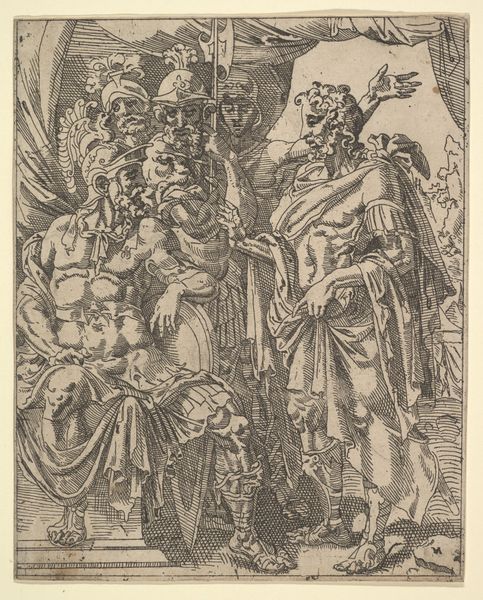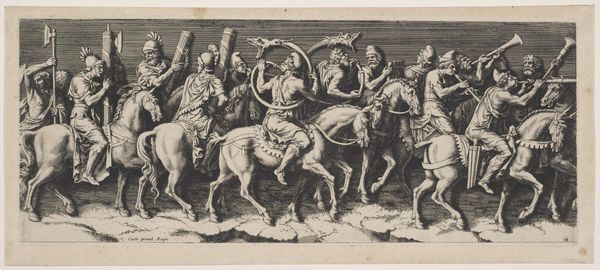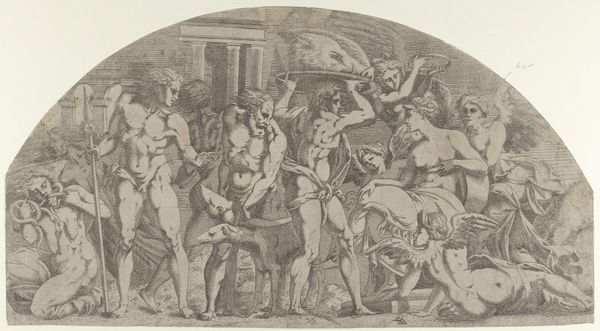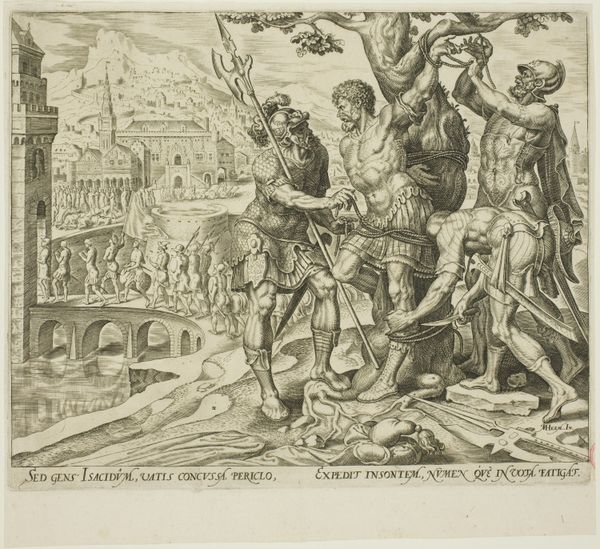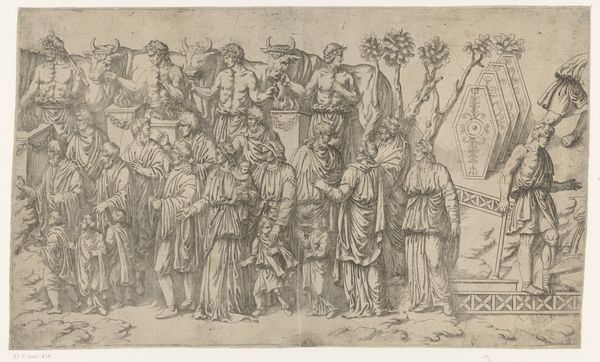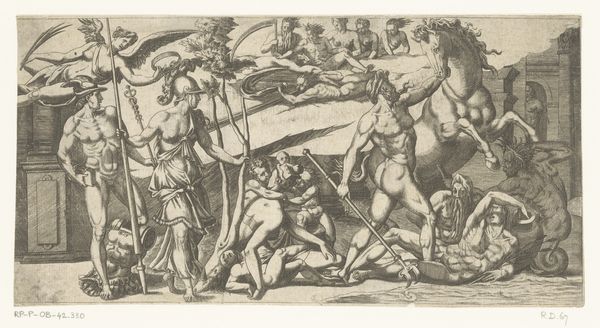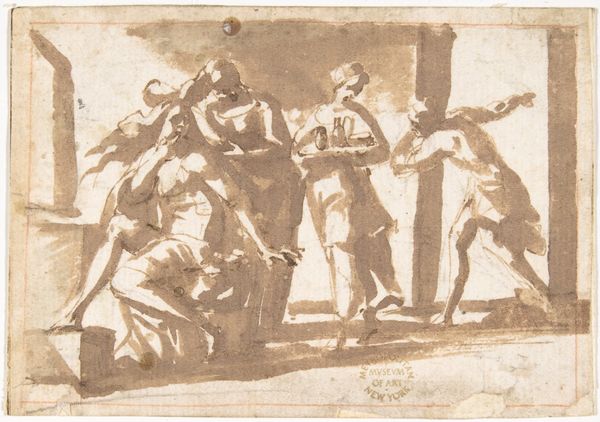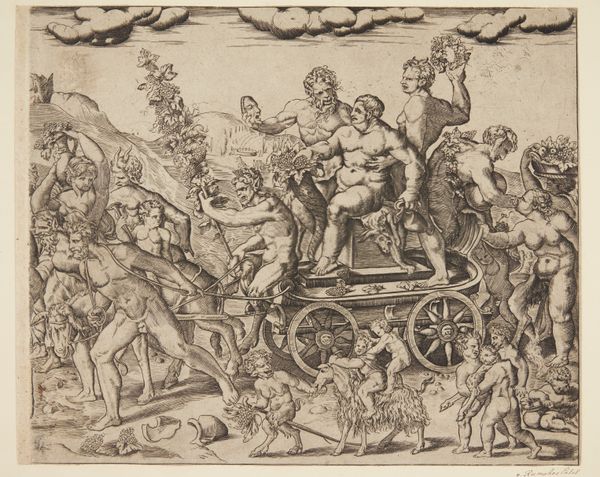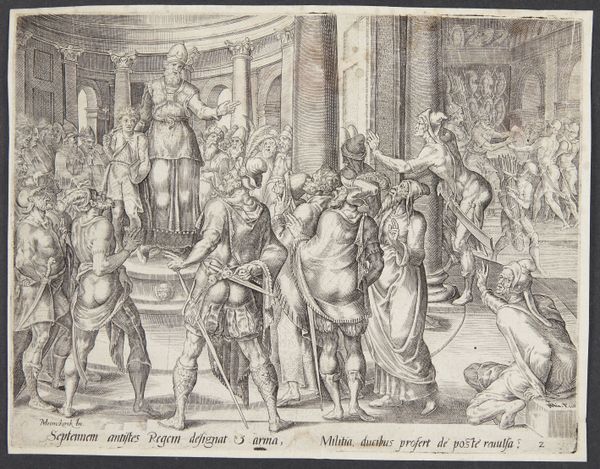
drawing, ink
#
portrait
#
drawing
#
ink drawing
#
baroque
#
pencil sketch
#
classical-realism
#
ink
#
history-painting
Dimensions: height 146 mm, width 173 mm
Copyright: Rijks Museum: Open Domain
Curator: Look at this intriguing ink drawing by Augustinus Terwesten (I), dating back to 1677, housed here at the Rijksmuseum. It’s entitled "Relief with Marcus Aurelius and the Conquered Barbarians." Editor: It feels immediate. Raw. Almost like catching a glimpse of history unfolding in real time. The monochromatic palette gives it a certain weight. Curator: Exactly. The drawing style aligns with the Baroque era, focusing on classical realism. We see Marcus Aurelius mounted on horseback, surrounded by soldiers, and, as the title suggests, defeated barbarians. Consider the context: The Baroque period often celebrated power and order. This piece functions almost as a record of power. Editor: Right, and I’m drawn to the use of ink. Its availability meant art was accessible. This accessibility opens up some compelling ideas: Who were the consumers of art like this? Who made it possible? The creation of the artwork depended on more than just artistic talent. Curator: An interesting perspective. The distribution network, artistic patronage; these all determine who can be immortalized through imagery. The social framework allowed someone like Marcus Aurelius to sit as the subject of the artwork. It emphasizes the connection between images and sociopolitical hierarchies of the period. Editor: And consider the artist's own socio-economic position. This piece had a utilitarian purpose for the art maker. Curator: Terwesten's piece acts as an accessible snapshot of historical ideology. I find the intersection of classical themes filtered through the Baroque lens truly fascinating. Editor: Absolutely, thinking about production and materials allows us to dig a bit deeper, and your historic point adds a crucial layer of depth to understanding the piece's creation and role in society. It serves as a strong reminder to ask about art history as more than an aesthetic practice. Curator: Precisely, this work offers multiple access points for analyzing historical ideas through imagery.
Comments
No comments
Be the first to comment and join the conversation on the ultimate creative platform.

